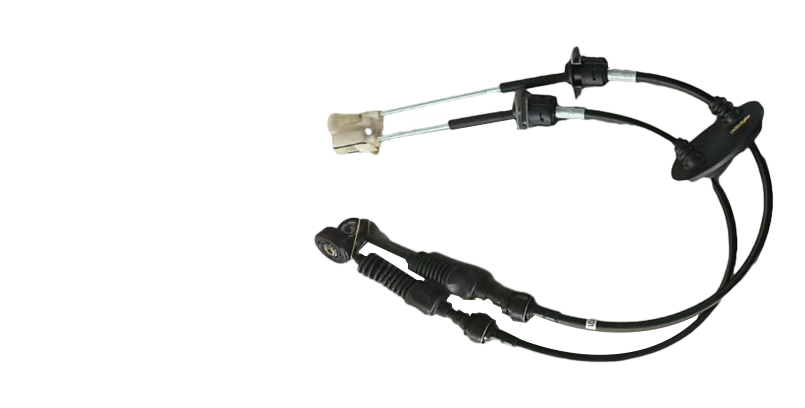Selecting the Right Shift Cable for Enhanced Vehicle Performance and Smooth Gear Changes
Shift Selector Cable An Overview
The shift selector cable is a crucial component in modern automobiles, playing an indispensable role in the functionality of the transmission system. This article aims to explore the significance, functionality, and maintenance principles of the shift selector cable, providing a comprehensive understanding for both automotive enthusiasts and everyday drivers.
What is a Shift Selector Cable?
The shift selector cable is a flexible conduit that connects the gear shift lever within the vehicle's cabin to the transmission system located under the hood. It is predominantly found in automatic transmissions, where it serves as the communication link that allows the driver to select different gears. This simple yet essential piece is typically made from high-quality materials designed to withstand extreme temperatures and resist wear and tear over time.
Functionality of the Shift Selector Cable
When a driver shifts gears, the shift selector cable transmits this input to the transmission, enabling the appropriate gear selection. The cable is designed to operate with low friction, allowing for smooth and precise gear shifts. In automatic transmission systems, the cable's role becomes particularly important as it relays the driver's intentions to the transmission control module (TCM). The TCM then adjusts the vehicle's gears according to various factors such as speed, engine load, and driver behavior.
Proper operation of the shift selector cable is vital for achieving optimal vehicle performance. If the cable becomes damaged or misaligned, it can lead to issues such as difficulty in shifting gears, gear slippage, or even complete failure to shift, resulting in a compromised driving experience.
Signs of a Failing Shift Selector Cable
Awareness of the signs indicating a failing shift selector cable can help prevent further complications
. Common symptoms include1. Difficulty in Shifting Gears If the driver has trouble shifting from one gear to another, it may indicate that the cable is frayed, kinked, or otherwise damaged. 2. Unresponsive Gear Shifts A lack of response when attempting to change gears can suggest a disconnection between the gear shift lever and the transmission.
shift selector cable

3. Strange Noises Unusual sounds, such as clunking or grinding, during gear changes may indicate a problem with the shift selector cable or associated components.
4. Dashboard Warning Lights In modern vehicles, some may trigger warning lights related to transmission issues, which could be linked to shift selector cable problems.
Maintenance and Replacement
Regular maintenance of the shift selector cable is essential for ensuring the longevity and functionality of the vehicle's transmission system. Here are some tips on how to keep the cable in optimal condition
- Routine Inspections Regularly inspect the shift selector cable for signs of wear, fraying, or damage. Pay attention to any visible cracks or breaks in the cable housing.
- Lubrication Keeping the cable well-lubricated can prevent friction and wear, promoting smoother operation. Consult the vehicle’s manual for specific recommendations on lubricants.
- Prompt Repairs At any sign of malfunction, seek professional assistance to diagnose the issue. Early intervention can prevent minor problems from escalating into costly repairs.
When replacement is necessary, it’s critical to choose high-quality cables specifically designed for your vehicle model. OEM (Original Equipment Manufacturer) parts are recommended for compatibility and reliability. Replacement generally requires basic mechanical skills, but it may be prudent to have the work conducted by a qualified technician, especially for those unfamiliar with automotive repairs.
Conclusion
The shift selector cable is a vital component that facilitates the smooth operation of the transmission system. Understanding its functionality and recognizing the signs of wear can greatly enhance vehicle performance and reliability. By prioritizing maintenance and seeking timely repairs when necessary, drivers can ensure that their vehicles continue to function efficiently and safely. With the increasing complexity of modern automobiles, a proactive approach to vehicle care can lead to a better driving experience and long-term peace of mind.
-
Workings of Clutch Pipe and Hose SystemsNewsJun.04,2025
-
The Inner Workings of Hand Brake Cable SystemsNewsJun.04,2025
-
The Secrets of Throttle and Accelerator CablesNewsJun.04,2025
-
The Hidden Lifeline of Your Transmission Gear Shift CablesNewsJun.04,2025
-
Demystifying Gear Cables and Shift LinkagesNewsJun.04,2025
-
Decoding Clutch Line Systems A Comprehensive GuideNewsJun.04,2025
